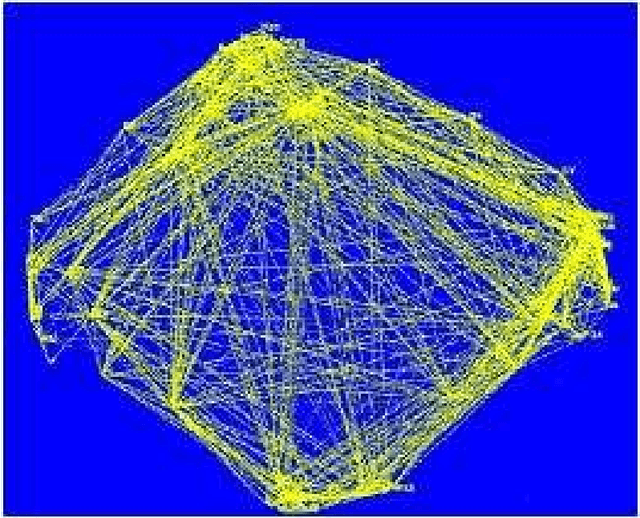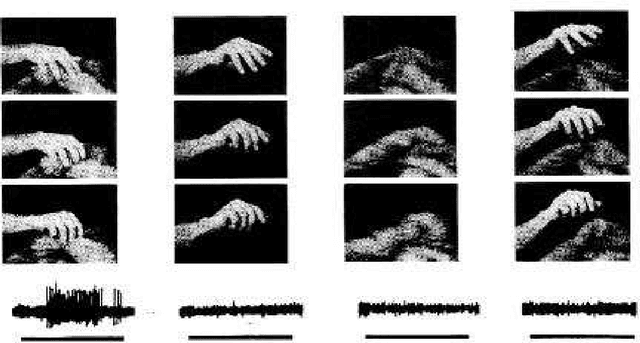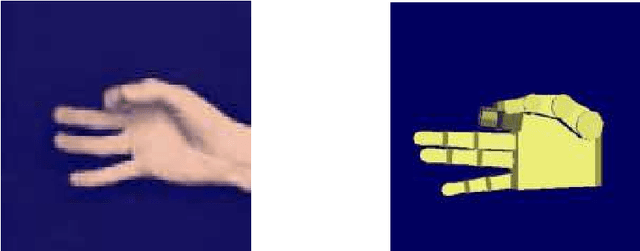P. C. McGuire
The Cyborg Astrobiologist: Matching of Prior Textures by Image Compression for Geological Mapping and Novelty Detection
Sep 16, 2013



Abstract:(abridged) We describe an image-comparison technique of Heidemann and Ritter that uses image compression, and is capable of: (i) detecting novel textures in a series of images, as well as of: (ii) alerting the user to the similarity of a new image to a previously-observed texture. This image-comparison technique has been implemented and tested using our Astrobiology Phone-cam system, which employs Bluetooth communication to send images to a local laptop server in the field for the image-compression analysis. We tested the system in a field site displaying a heterogeneous suite of sandstones, limestones, mudstones and coalbeds. Some of the rocks are partly covered with lichen. The image-matching procedure of this system performed very well with data obtained through our field test, grouping all images of yellow lichens together and grouping all images of a coal bed together, and giving a 91% accuracy for similarity detection. Such similarity detection could be employed to make maps of different geological units. The novelty-detection performance of our system was also rather good (a 64% accuracy). Such novelty detection may become valuable in searching for new geological units, which could be of astrobiological interest. The image-comparison technique is an unsupervised technique that is not capable of directly classifying an image as containing a particular geological feature; labeling of such geological features is done post facto by human geologists associated with this study, for the purpose of analyzing the system's performance. By providing more advanced capabilities for similarity detection and novelty detection, this image-compression technique could be useful in giving more scientific autonomy to robotic planetary rovers, and in assisting human astronauts in their geological exploration and assessment.
* 27 pages, 3 figures, 2 tables, accepted for publication in the International Journal of Astrobiology
The Cyborg Astrobiologist: Testing a Novelty-Detection Algorithm on Two Mobile Exploration Systems at Rivas Vaciamadrid in Spain and at the Mars Desert Research Station in Utah
Oct 28, 2009



Abstract:(ABRIDGED) In previous work, two platforms have been developed for testing computer-vision algorithms for robotic planetary exploration (McGuire et al. 2004b,2005; Bartolo et al. 2007). The wearable-computer platform has been tested at geological and astrobiological field sites in Spain (Rivas Vaciamadrid and Riba de Santiuste), and the phone-camera has been tested at a geological field site in Malta. In this work, we (i) apply a Hopfield neural-network algorithm for novelty detection based upon color, (ii) integrate a field-capable digital microscope on the wearable computer platform, (iii) test this novelty detection with the digital microscope at Rivas Vaciamadrid, (iv) develop a Bluetooth communication mode for the phone-camera platform, in order to allow access to a mobile processing computer at the field sites, and (v) test the novelty detection on the Bluetooth-enabled phone-camera connected to a netbook computer at the Mars Desert Research Station in Utah. This systems engineering and field testing have together allowed us to develop a real-time computer-vision system that is capable, for example, of identifying lichens as novel within a series of images acquired in semi-arid desert environments. We acquired sequences of images of geologic outcrops in Utah and Spain consisting of various rock types and colors to test this algorithm. The algorithm robustly recognized previously-observed units by their color, while requiring only a single image or a few images to learn colors as familiar, demonstrating its fast learning capability.
* 28 pages, 12 figures, accepted for publication in the International Journal of Astrobiology
Multi-Modal Human-Machine Communication for Instructing Robot Grasping Tasks
May 24, 2005



Abstract:A major challenge for the realization of intelligent robots is to supply them with cognitive abilities in order to allow ordinary users to program them easily and intuitively. One way of such programming is teaching work tasks by interactive demonstration. To make this effective and convenient for the user, the machine must be capable to establish a common focus of attention and be able to use and integrate spoken instructions, visual perceptions, and non-verbal clues like gestural commands. We report progress in building a hybrid architecture that combines statistical methods, neural networks, and finite state machines into an integrated system for instructing grasping tasks by man-machine interaction. The system combines the GRAVIS-robot for visual attention and gestural instruction with an intelligent interface for speech recognition and linguistic interpretation, and an modality fusion module to allow multi-modal task-oriented man-machine communication with respect to dextrous robot manipulation of objects.
* 7 pages, 8 figures
Neural Architectures for Robot Intelligence
Oct 18, 2004



Abstract:We argue that the direct experimental approaches to elucidate the architecture of higher brains may benefit from insights gained from exploring the possibilities and limits of artificial control architectures for robot systems. We present some of our recent work that has been motivated by that view and that is centered around the study of various aspects of hand actions since these are intimately linked with many higher cognitive abilities. As examples, we report on the development of a modular system for the recognition of continuous hand postures based on neural nets, the use of vision and tactile sensing for guiding prehensile movements of a multifingered hand, and the recognition and use of hand gestures for robot teaching. Regarding the issue of learning, we propose to view real-world learning from the perspective of data mining and to focus more strongly on the imitation of observed actions instead of purely reinforcement-based exploration. As a concrete example of such an effort we report on the status of an ongoing project in our lab in which a robot equipped with an attention system with a neurally inspired architecture is taught actions by using hand gestures in conjunction with speech commands. We point out some of the lessons learnt from this system, and discuss how systems of this kind can contribute to the study of issues at the junction between natural and artificial cognitive systems.
* 37 pages, 17 figures
 Add to Chrome
Add to Chrome Add to Firefox
Add to Firefox Add to Edge
Add to Edge